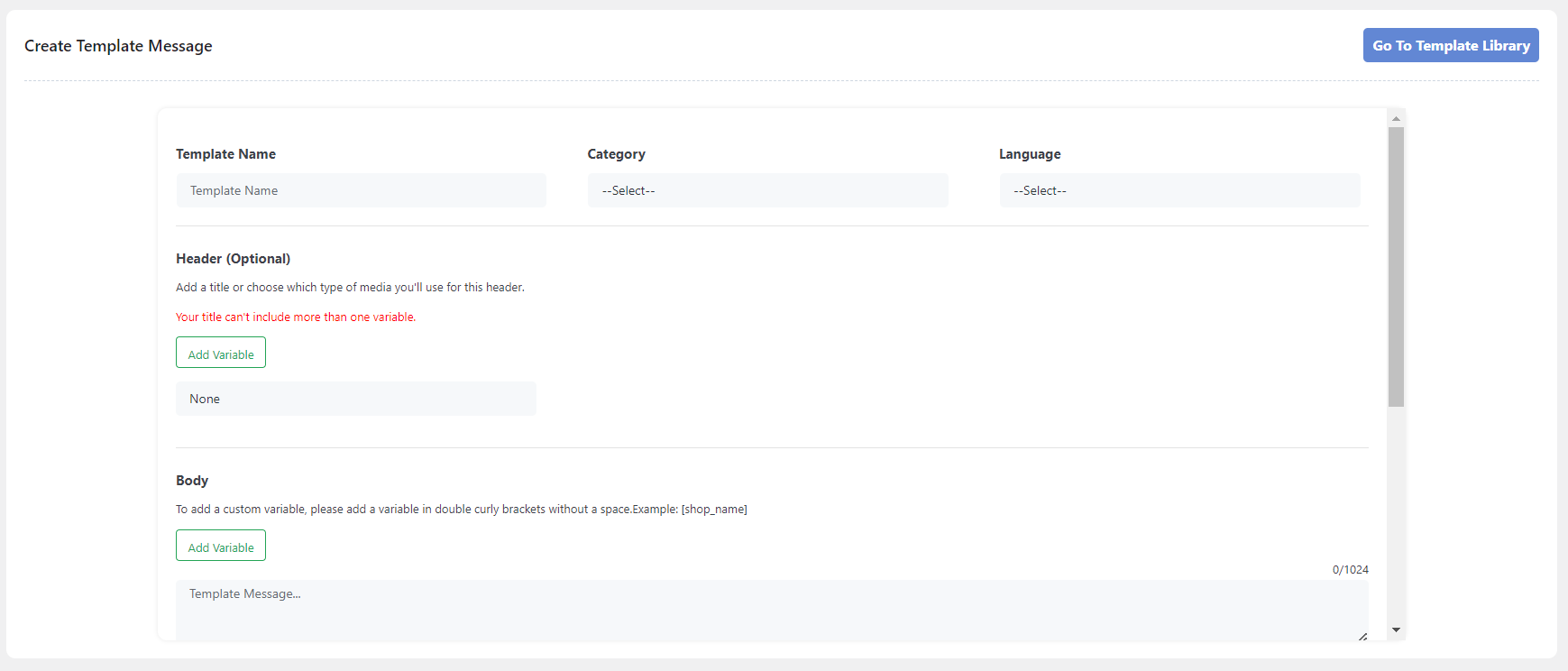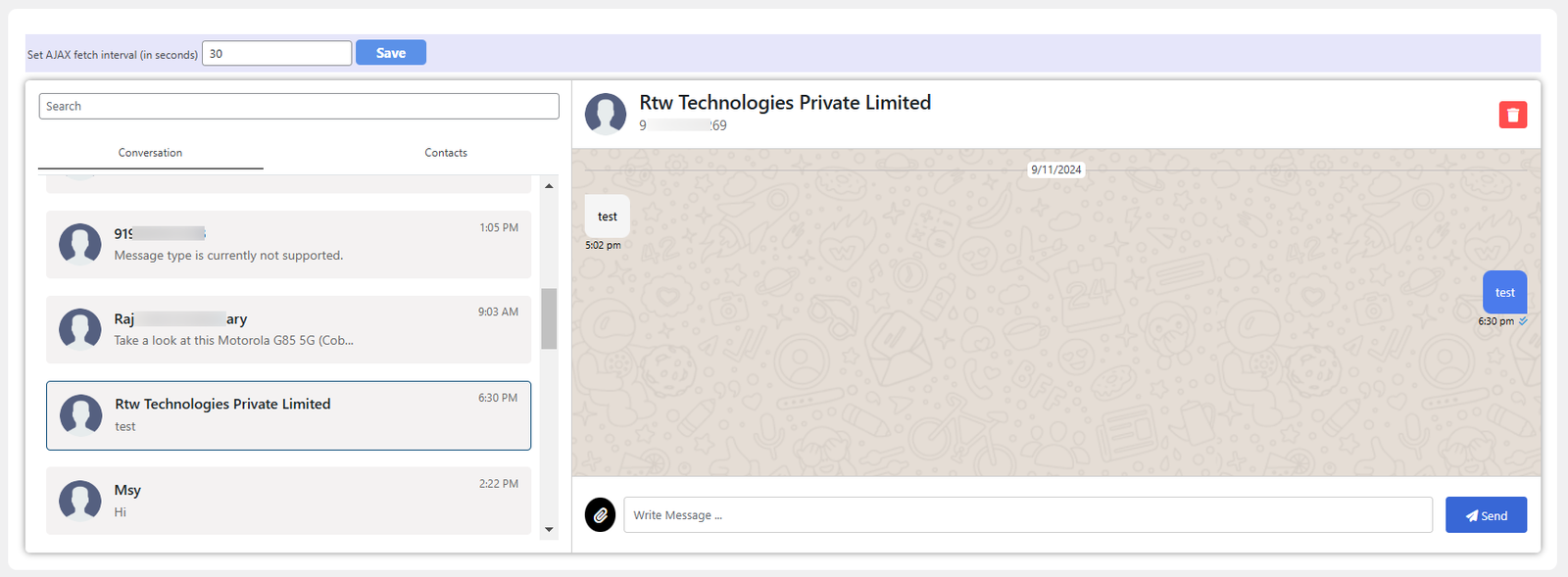To create a WhatsApp template, access the “Template” section and choose “Create Template.” Fill in details for header, body, footer, and buttons, keeping in mind character limits. Categorize templates as Authentication, Marketing, or Utility.
- Access Template Menu: Navigate to “Template” and click “Create Template” for the creation process.
- Input Details: Enter header, body, footer, and button information for your template.
- Components Overview: Templates consist of header, body, footer, and buttons – tailor them based on business needs.
- Naming Constraints: No spaces, limited characters, and use only alphanumeric characters or underscores in template names.
- Categories: Categorize templates as Authentication, Marketing, or Utility, impacting pricing and validation.
- Language Considerations: Include language codes for multilingual templates in the header section.
- Variable Usage: Use only one variable in the header, and strike a balance in the body to avoid rejection.
- Character Limits: Stay within the 1024-character limit for the body, keeping it concise and focused.
- Optional Footer: Keep it brief and relevant; no variables are allowed in the footer section.
- Button Options: Utilize WhatsApp buttons for CTAs or Quick Replies to enhance user engagement.
- Submission Process: Click submit after ensuring compliance with WhatsApp API guidelines for approval.
- Approval Time: Approval typically takes 1 to 3 minutes; Once approved, you can refresh the template table to see the updated status.
Manage Phone Number
- Add more business account numbers: Expand your communication channels by adding additional phone numbers to your business.
- Refresh phone numbers: Update the information associated with your existing phone numbers.
- Verify phone numbers: Ensure that your phone numbers are connected to your WhatsApp Business account.
- Manage phone number status: Monitor the connection status and quality rating of each phone number.
- Set default number: Choose the primary phone number that will be used for sending messages.
Webhook
Webhooks are a powerful tool in WhatsApp Business that allows you to create custom integrations and automate tasks based on specific events or messages. By configuring a webhook, you can receive real-time notifications from the WhatsApp Business API and trigger actions in your own application or system.
-
URL:
- This is the web address of your application or server that will receive the webhook notifications.
- It should be a publicly accessible URL that can be reached by the WhatsApp Business API.
- You’ll need to configure this URL in your WhatsApp Business Account or Facebook Graph API settings.
-
Token:
- The token is a unique identifier that authenticates your webhook and ensures that only authorized requests are sent to your application.
- It’s essential to keep your token secure to prevent unauthorized access.
Abandoned cart items notification:
The notification aims to remind and encourage the customer to return and finalize their transaction, often by highlighting the items in their abandoned cart and possibly offering incentives or discounts to complete the purchase.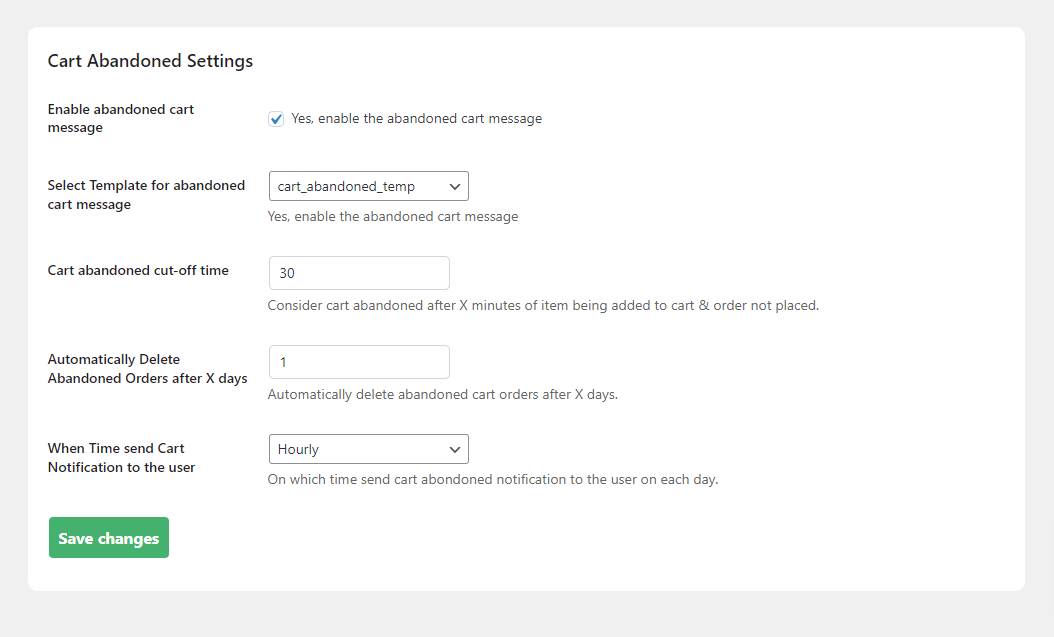
Enable/Disable Abandoned Message:
- Toggle Functionality: Activate or deactivate the sending of abandoned cart messages via WhatsApp.Enabling the abandoned message feature triggers WhatsApp reminders for users with abandoned shopping carts.
Enable/Disable Coupon Code:
- Toggle Functionality: Toggle to activate or deactivate the feature of sending coupon code messages via WhatsApp to re-engage customers and boost sales. Enabling the coupon code message feature triggers WhatsApp messages with unique coupon codes to customers who have abandoned their shopping carts.
Select Template:
- Template Choice: Pick an approved template from the list to use for sending abandoned cart messages. Choosing an approved template ensures a standardized and effective message for abandoned cart notifications.
Cart Abandoned Cut-off Time:
- Defined Duration: Specify, in minutes, when a customer’s cart is considered abandoned. The cut-off time determines the duration a cart can remain idle before being marked as abandoned.
Automatically Delete Abandoned Orders:
- Time Frame: Choose the number of days after which abandoned order data saved in the server should be automatically removed from the system. Automatic deletion of abandoned orders data saved in the database helps maintain system cleanliness by removing unnecessary data after a set period.
Scheduled Send Time:
- Optimize Timing: Set the time for sending abandoned cart messages to enhance customer engagement.
- Customization: Optionally, select “Set Custom” to define a specific time for message delivery.
Scheduled send time allows administrators to strategically time the delivery of abandoned cart messages for optimal engagement. The “Set Custom” option provides flexibility for specific timing preferences.
Automate Template Notifications:
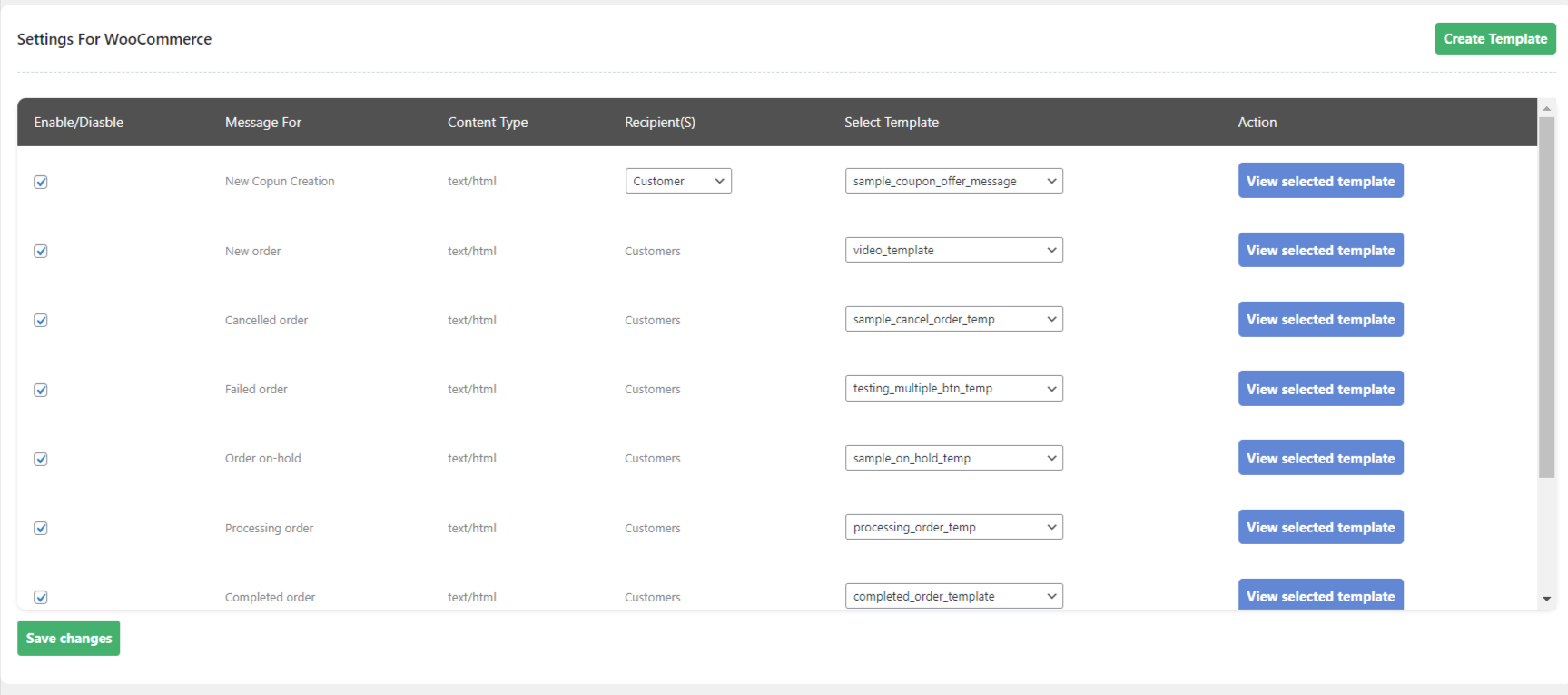
NOTE: If certain customers lack dynamic values for variables, the variable is replaced with its name in the message.
- Enable/Disable Template Messages:
- This feature allows administrators or users to toggle the activation or deactivation of sending template messages.
- Template messages are predefined messages that can be automatically sent in response to specific events in the WooCommerce environment.
- Select Template for some Event:
- Users with administrative privileges can choose a specific template to be associated with and sent for each selected event.
- Events could include actions like the creation of a new coupon or the completion of an order.
- Preview Template:
- Before finalizing the setup or sending a template message, there is a preview functionality available.
- Clicking on “View Selected Template” allows administrators to see how the selected template will appear before it is actually sent.
- This ensures the accuracy and appropriateness of the message content.
Broadcast:
In the “Broadcast Message Settings” submenu, specify configurations for sending messages to multiple recipients
NOTE: Ensure you choose templates without variables when selecting broadcast messages,
as variables are not supported in this context.
- Delivery Options:
- Choose between instant delivery (“Send Now”) or scheduled broadcasts for flexibility.
- Instant Delivery:
- Best for urgent updates, flash sales, or time-sensitive information that requires immediate attention.
- Scheduled Broadcasts (Repetitive):
- Plan messages strategically with options like hourly, daily, or specific intervals.
- The chosen schedule repeats, ensuring messages are sent regularly at each selected interval.
- Efficient Time Management:
- Efficiently allocate resources and time for message preparation with scheduled broadcasts.
- Consistent Communication:
- Establish a reliable and predictable communication schedule without overwhelming the audience.
- Template Flexibility:
- Admins have the flexibility to choose from multiple templates, allowing customization based on the nature and goals of the campaign.
When scheduling a broadcast for a future time, the information appears in a table within the admin interface. The table includes a checkbox associated with each scheduled broadcast message. Admins can easily enable or disable specific scheduled broadcasts by clicking on the corresponding checkbox, providing a quick and convenient way to manage and control the status of upcoming messages.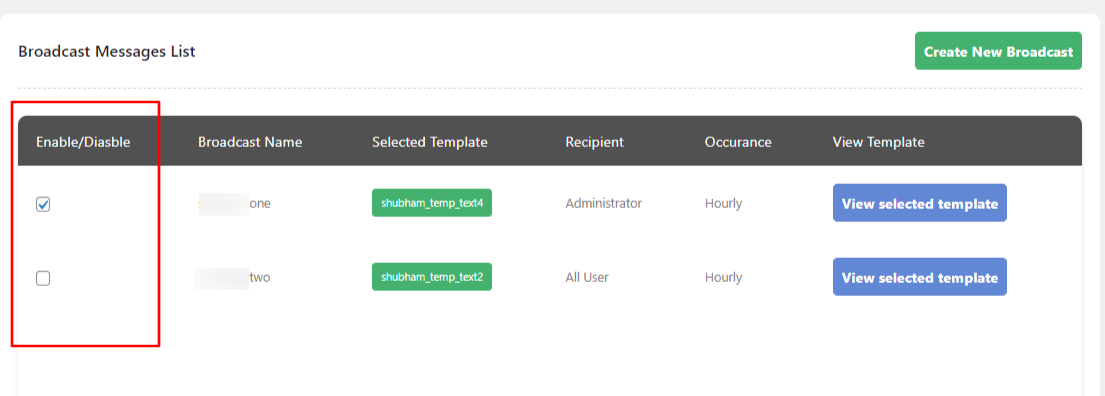
Campaign Groups:
If the admin wants to make a campaign for its selected or valuable customer so he can create a group and broadcast message only those grouped customers.
- Create and manage groups: You can create groups of contacts to target specific audiences with your campaigns.
- Group details: Each group shows the group name, number of contacts, percentage of total contacts, and creation date.
- Search: You can search for specific groups using the search bar.
- Action: You can take actions like deleting a group if necessary.
Backend Panel for Customer Inquiries:
This backend panel provides a centralized platform for administrators to manage and respond to customer inquiries directly through WhatsApp. By integrating the WhatsApp Business API with Facebook’s Graph API, businesses can enable real-time communication with customers.
- Conversation View: Administrators can view all incoming and outgoing messages, providing a clear overview of customer interactions.
- Real-time Responses: Messages can be responded to immediately, ensuring timely customer service.
- AJAX Fetch Interval: The conversation feed can be automatically updated at a specified interval, ensuring that administrators are always up-to-date with the latest messages.
- Message Management: Administrators can manage messages, including replying, seeing if the sent message is read or unread, and deleting them.
By effectively utilizing this backend panel, businesses can streamline their customer support processes, improve response times, and enhance overall customer satisfaction.
Auto-Reply and Bot Management:
Administrators can create and customize auto-replies based on specific keywords or phrases, ensuring that customers receive relevant and helpful information.This admin setting allows for efficient management of customer interactions by enabling automated responses to common queries. By setting up auto-replies, businesses can:
- Save time: Reduce the need for manual intervention by providing instant responses to frequently asked questions.
- Improve customer satisfaction: Offer timely and consistent responses to customer inquiries, enhancing their experience.
- Increase efficiency: Streamline customer support operations by automating routine tasks.
